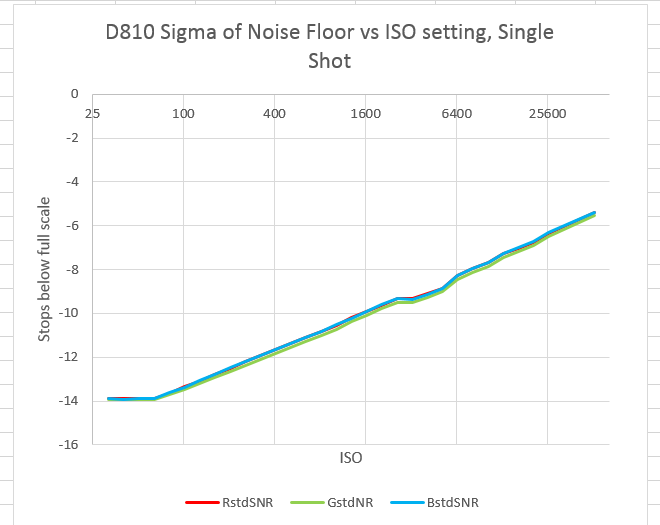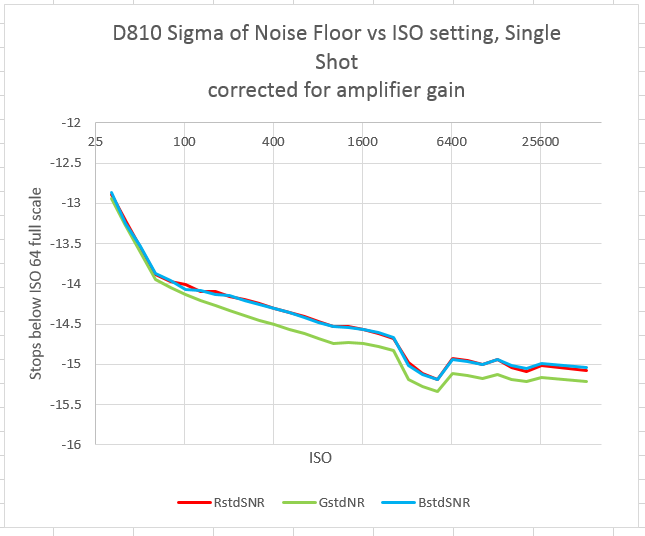I brought the dark-field exposures of the previous post — plus a few more so that I has an exposure every 1/3 stop — into RawDigger, selected the central 90% of the frame, and measured the standard deviation of the read noise. I normalized the results to a full scale count of 16383, and here’s the result:
The read-noise-limited dynamic range is a commendable 14 stops. The three ISO settings below ISO 64 are a shuck, as usual. You can see that there’s something funny going on between ISO 2000 and ISO 6400 that causes the noise to be lower than you’d think it should be.
Looking at it referred to the input of the variable-gain amplifier:
The read noise actually rises from ISO 5000 to ISO 6400, which is passing strange.


Hi Jim, a couple of questions:
1) Given the histograms in yesterday’s post it would seem that normalization should refer to a full scale of 16383-600, right?
2) Do you also take readings off two black fields and subtract them to eliminate potential non uniformities and pattern noise?
3) Are these results in the ballpark of those obtained from the optical black pixels?
Jack
1) You’re probably right, but it’s a tiny difference. I think I’ll leave it as is. Good catch, though.
2) No.
3) Haven’t looked at that.
Thanks,
Jim
Is that dip at 3200 noise reduction being applied? I remember something like that being said about the D800.